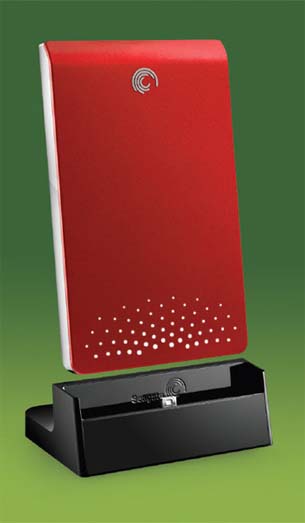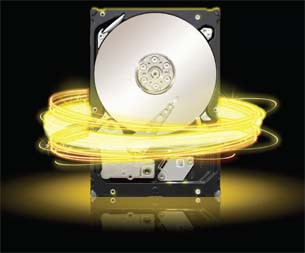Latest News
September 1, 2010
By Siemens PLM
Editor’s Note: This content is sponsored by Siemens PLM.
 |
Seagate is the world’s leading manufacturer of hard disk drives. The company has been hugely successful in a competitive market segment by delivering industry-leading innovation and quality while aggressively managing product cost.
The same bold business vision drives the company’s strategy for environmental leadership. Rather than a reactive approach to the ever-increasing number of regulations regarding environmentally hazardous content, Seagate has created a proactive product development process that integrates environmental care into the entire product lifecycle.
Based on the Teamcenter® portfolio from Siemens PLM Software, Seagate’s environmental compliance strategy goes beyond enabling the company to establish and document compliance with standards such as the Restriction of Use of Hazardous Substances (RoHS) and Waste Electrical and Electronic Equipment (WEEE). Beyond delivering customer and market requirements, the strategy supports Seagate’s commitment to corporate environmental stewardship.
“The basic compliance reporting required by the industry is not sufficient for us,” explains Brian Martin, senior director, Product Environmental Compliance at Seagate. “From a business perspective, we see environmental care as a competitive differentiator, and we wanted a process to support that vision.”
Cherryl McDougall, executive director of Environmental Health and Safety and Global Citizenship at Seagate, echoes these sentiments: “For us, it’s not just about regulatory compliance. It’s really about what our customers care about and how we deliver that in the most efficient and effective way. From a product stewardship perspective, we want to make sure that we are delivering the best products with the least impact on people and the environment.”
Good environmental stewardship and product knowledge are now differentiating Seagate from its competitors. McDougall explains, “We are able to prove to our partners and customers that we care about people and the environment and we are socially responsible. We are really looking for full disclosure about what’s in our product. Some other companies don’t take that approach. They’ll say, ‘We don’t have any of the things that are on this list or that list,’ but for us, what we say to our customers is, ‘Here’s everything that we use in our products from start to finish.’ We began our strategy several years ago. We made a conscious decision to collect data on every piece, every material that’s in our product.”
Challenges:
Keys To Success:
Results:
|
Teamcenter supports strategic environmental vision
Seagate chose Teamcenter to address its environmental goals for a number of reasons. One was that it could easily be integrated with other Seagate applications. Also, the software is easy to use and includes a significant amount of environmental compliance functionality out of the box. “In the evaluation process, we spent considerable time and money making sure the system we chose would satisfy our known customer requirements and support our future strategic efforts as well,” Martin says. “Most importantly, Teamcenter supports our strategic environmental care vision and satisfies present and future customer requirements.”
Boris Chechelinitsky, senior director at Seagate IC, notes, “One of the benefits of Teamcenter’s environmental compliance capabilities is that we did not have to do a lot of customizations. We could just align with its out-of-the-box solution functionality. That reduces our cost, not just in putting the original solution in place, but also in maintaining and going forward. As long as we can rely on Siemens PLM Software’s upgrades, we can keep our costs low and we keep it easy for ourselves. That’s a big part of our strategy.”
Seagate’s position in the middle of the supply chain makes environmental compliance especially challenging. The company requires the verification of the content in every component it purchases from its suppliers. But since Seagate is also a supplier to the computer OEMs (as well as markets products to consumers directly), it must also be able to assure its customers of its own compliance with regulations.
For the OEMs, for example, Seagate demonstrates compliance by collecting and producing lab work that proves the makeup of its products. This information can be no older than 12 months. This involves tracking a tremendous amount of data. “We collect current, detailed data on every substance in every material in every part in our product,” says Martin. “For each part there can be as few as one or two documents associated with the part or as many as two or three dozen.”
McDougall adds, “When you start collecting that data, you’re building a database and every time there’s a new requirement that comes from the regulations or our customers, we already have the data. It’s just a matter of us going to our database and pulling the information out. In contrast, every time our competitors have a new requirement, they need to make adjustments in the types of data that they’re collecting. This is an extra burden, an extra cost. But for us, it’s really just going to the data and running a report versus collecting new sets of data. We are ahead of the game.”
McDougall puts this advantage in perspective: “Seagate has been on the leading edge. We’ve had other companies ask us about our process and tell us that we are two to three years ahead of them – being able to collect and manage the data efficiently.”
Leveraging compliance data for maximum value, competitive advantage
By managing all of this information in Teamcenter, the company is able to leverage the data in such a way that it has value beyond simply establishing that Seagate’s existing products contain no banned substances. Design teams can easily access information to consider compliance during the earliest development stages of new products – for example, to determine how the selection of a particular part might affect the supply chain. Martin has immediate access to the information he needs to perform strategic analysis and risk management. In addition, sales and logistics personnel can access the information to provide environmental reports for customers and suppliers. Marketing can access the system to look at requirements for various markets.
 |
“Our prior process was very manual and disconnected,” says Martin. Previously when Seagate had a reporting request, emails were sent out asking for information and then individuals would assemble the data for the report. It took hours to weeks to produce the data in response to a request. Now with Teamcenter the process is highly automated and can be done in a matter of minutes.
Martin points out, “Eventually our database will contain information on as many as 20,000 substances. To be proactive in collecting such information ourselves, we needed a solution that could satisfy our reporting capabilities on a global basis. Teamcenter does that. Teamcenter, in fact, makes the process both sustainable and cost-effective, as well as gives us the flexibility to react to future regulations and customer requests.”
Ultimately, the Teamcenter solution helps Seagate in its effort to position itself as a green company, which is key to maintaining its leadership role in the highly competitive high tech and electronics market. “Our efforts regarding environmental care represent a competitive differentiator because in this industry compliance with new regulations can mean first to qualify, and first into a major market,” says Martin. “Our view is that Teamcenter has played and will increasingly play a critical role in helping us increase our competitive edge.”
Subscribe to our FREE magazine, FREE email newsletters or both!
Latest News
About the Author
DE’s editors contribute news and new product announcements to Digital Engineering.
Press releases may be sent to them via [email protected].






